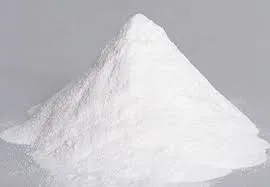
paź . 01, 2024 08:14 Back to list
Understanding the Applications and Benefits of Redispersible Polymer Powders in Construction
Understanding Redispersible Polymer Powder (RDP) A Key Ingredient in Modern Construction
Redispersible Polymer Powder (RDP) has emerged as an invaluable component in the construction and building materials industry, offering unique benefits that enhance performance, efficiency, and sustainability. As a powdered form of synthetic polymers, RDP is typically utilized in cement-based formulations, tile adhesives, plaster, and various other construction materials.
Composition and Properties of RDP
RDP is produced by spray-drying emulsions of polymer resins, resulting in a free-flowing powder that can easily blend with dry mix formulations. When mixed with water, RDP particles redispersed and reconstitute into a flexible film. This process retains the properties of the original polymer, providing crucial advantages in terms of adhesion, flexibility, and deformation resistance.
The primary advantage of using RDP is its ability to enhance the performance of construction materials. The addition of RDP improves the workability of the mixtures, making them easier to apply. Furthermore, it increases adhesion, allowing materials to bond better to various substrates. This is particularly important in applications like tile adhesives, where a strong bond is crucial for longevity and durability.
Applications of RDP in Construction
RDP finds its utility across a broad range of construction applications. One of its predominant uses is in tile adhesives, where it significantly improves the adhesion between the tile and the substrate. This enables tiles to stay securely in place, even under conditions of moisture and temperature fluctuations. RDP also enhances the flexibility of adhesives, making them less prone to cracking and separating over time.
redispersible polymer powder rdp

In plaster applications, RDP helps in improving the wet and dry strength of mortar. It provides a level of flexibility that prevents cracking as the plaster dries and shrinks. Additionally, RDP can enhance water resistance, ensuring that both interior and exterior plasters maintain their integrity over various weather conditions.
Moreover, RDP is used in self-leveling compounds, where its properties assist in achieving a smooth, level surface over concrete subfloors. The inclusion of RDP allows these compounds to be more forgiving during application, providing a user-friendly solution for flooring projects.
Sustainability and Environmental Impact
As the construction industry increasingly focuses on sustainability, RDP plays a significant role. The use of RDP can reduce the amount of cement required in formulations, leading to lower carbon emissions associated with cement production. Additionally, because RDP contributes to improved performance characteristics, it can extend the service life of building materials, further enhancing their sustainability.
Recyclability is another factor worth noting. As RDP-containing products age, they can often be reclaimed and reused in new applications, minimizing waste. This aligns with the global push toward more environmentally responsible construction practices.
Conclusion
Redispersible Polymer Powder is a crucial additive that drives innovation in the construction industry. Its ability to enhance the performance and longevity of construction materials while supporting sustainable practices makes it an essential ingredient in modern building solutions. As the industry continues to evolve, the role of RDP will likely expand, allowing for the development of even more advanced and sustainable construction practices. In an era where efficiency and environmental responsibility are paramount, RDP stands out as a key player in shaping the future of construction.
-
Versatile Hpmc Uses in Different Industries
NewsJun.19,2025
-
Redispersible Powder's Role in Enhancing Durability of Construction Products
NewsJun.19,2025
-
Hydroxyethyl Cellulose Applications Driving Green Industrial Processes
NewsJun.19,2025
-
Exploring Different Redispersible Polymer Powder
NewsJun.19,2025
-
Choosing the Right Mortar Bonding Agent
NewsJun.19,2025
-
Applications and Significance of China Hpmc in Modern Industries
NewsJun.19,2025







